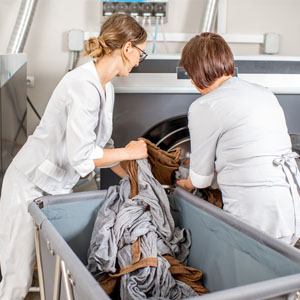Laundry requires specialized knowledge and service. Chemical suppliers often serve as trusted business partners for commercial end users because they provide expert service, especially for large accounts in the healthcare, hospitality, and commercial laundry segments. Kline’s research for our Laundry Chemicals study is underway and, so far, these three end-use segments appear to be contributing to market gains.
Green cleaning trends impacting professional laundry include water recycling/reuse systems, effluent management systems, ozone or electrolyzed water systems, and cold water washing. Water recycling and effluent management systems are expensive and difficult to engineer so only cleaning operations who want to promote a “sustainability/corporate responsibility” image or adhere to government regulations are likely to implement. Ozone water systems have been on the market for 20+ years, and some end users use them as part of their green cleaning initiatives while others are not sold on the usefulness of such systems. Cold water washing, where water temperatures are anywhere from 90-120 °F, use less energy than hot water washing; however, some end users that are particularly concerned with eliminating bacteria, viruses, and other germs from laundry, such as hospitals and long-term care facilities, may not be willing to use cold water washing systems.
Laundry chemicals are actually a very small portion of overall laundry costs, with labor, linen replacement, and utilities making up much larger cost components for end users. Chemical suppliers offering expert service and advice on how to manage these costs and educate end users on how to optimize laundry performance are viewed as strategic partners. Indeed, the types of laundry being done and the predominant composition of stains and soil in the laundry can mean very different chemicals, water temperatures, and washing machines used. For example, foodservice linens are likely to contain oily stains and food residue whereas linens being laundered from hospitals or long-term care facilities are more likely to contain bodily fluids and must be cleaned using very different approaches.
Learn more about these and other important trends, including the prevalence of Internet of Things and smart technology, market size, growth, and shares by suppliers, end-use segment, and product category, five-year market forecasts, the use of commercial laundries and laundry outsourcing, and textile rental trends from Kline’s upcoming Laundry Chemical Products USA: Market Analysis and Opportunities, which is expected to be published this summer.

